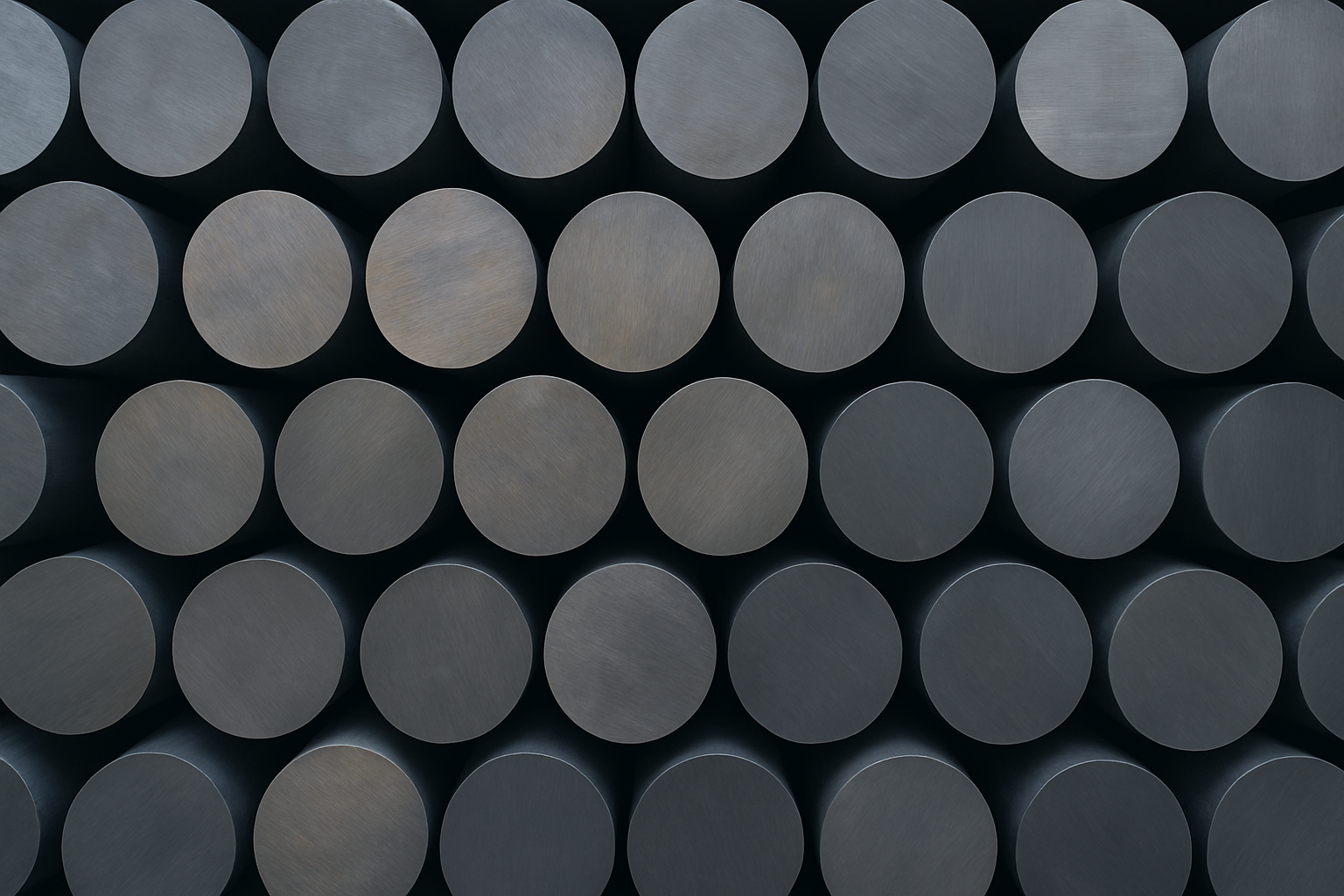What Are Common Aluminum Alloys?
Aluminum alloys are essential in industries ranging from aerospace to construction. While pure aluminum is lightweight and corrosion-resistant, it’s too soft for most structural applications. That’s where common aluminum alloys come in—blends of aluminum with magnesium, silicon, zinc, or copper that offer enhanced strength, durability, and formability. In this guide, we’ll explore the most commonly used aluminum alloys, how they’re processed, and how to choose the right form—whether sheet, coil, foil, or recycled material—for your project. You can also find additional technical data on aluminum alloy properties from ASM International.
Wrought vs. Casting Alloys: What’s the Difference?
Aluminum alloys are grouped into two main categories. These are defined using a standardized aluminum alloy designation system maintained by the Aluminum Association.
- Wrought alloys – Mechanically worked into products like coil, sheet, plate, and tubing through rolling, extrusion, or forging.
- Casting alloys – Poured into molds to create complex shapes such as engine blocks or transmission housings.
Most common industrial products—like aluminum sheet, foil, and fin stock—are made from wrought alloys.
Common Wrought Aluminum Alloys
1xxx Series – Pure Aluminum (e.g., 1050, 1060, 1100)
- Why it behaves this way:
- Made of ≥99% aluminum, with minimal alloying.
- Lacks strengthening elements like magnesium or copper.
- Key Properties Explained:
- Excellent conductivity: High aluminum purity means electrons and heat pass through easily.
- Soft and ductile: Without hardening agents, the metal stays very malleable.
- Great corrosion resistance: No reactive elements like copper or iron to accelerate corrosion.
- Common Forms:
- Foil, sheet, fin stock, and coil
- Used In:
- Electrical conductors, food and pharma packaging, chemical tanks, HVAC systems
3xxx Series – Aluminum-Manganese (e.g., 3003, 3105)
- Why it behaves this way:
- Contains ~1% manganese, which acts as a solid solution strengthener.
- Key Properties Explained:
- Moderate strength: Manganese increases tensile strength without reducing ductility.
- Good corrosion resistance: No copper, so it's less reactive in water or humid environments.
- Excellent formability: The grain structure remains soft enough for bending and shaping.
- Common Forms:
- Sheet, coil, roofing products, cooking utensils
- Used In:
- Residential siding, cookware, trailer panels, beverage cans
5xxx Series – Aluminum-Magnesium (e.g., 5052, 5083, 5754)
- Why it behaves this way:
- Contains 2–5% magnesium, with some also having manganese or chromium.
- Key Properties Explained:
- High strength: Magnesium significantly increases strength, especially fatigue resistance.
- Excellent corrosion resistance: Magnesium forms a protective oxide layer, especially effective in saltwater.
- Weldability: Lower cracking risk during welding due to solid solution alloying.
- Common Forms:
- Sheet, plate, coil, marine-grade components
- Used In:
- Boat hulls, fuel tanks, pressure vessels, truck trailers, railcars
6xxx Series – Aluminum-Magnesium-Silicon (e.g., 6061, 6063)
- Why it behaves this way:
- Contains both magnesium and silicon in a balanced ratio, forming the intermetallic Mg₂Si phase.
- Key Properties Explained:
- Heat-treatable: Mg₂Si enables precipitation hardening, significantly increasing strength with heat treatment.
- Good machinability: The grain structure and silicon content allow clean cutting.
- Strong yet formable: Versatile balance of strength, corrosion resistance, and weldability.
- Common Forms:
- Used In:
- Structural components, bicycle frames, aerospace brackets, automotive parts
7xxx Series – Aluminum-Zinc (e.g., 7075, 7475)
- Why it behaves this way:Key Properties Explained:
- High zinc content (5–8%), often with magnesium and copper. Forms very strong precipitate phases like MgZn₂.
- Extremely high strength: Fine precipitates from zinc and magnesium dramatically boost yield strength.
- Lower corrosion resistance: Copper and zinc accelerate galvanic corrosion unless coated or anodized.
- Reduced weldability: Brittle intermetallic phases increase cracking risk during welding.
- Common Forms:
- Plate, extruded bar, forged components
- Used In:
- Aerospace, defense, sporting equipment, high-performance auto parts
For detailed thermal conductivity and phase transformation data, NIST maintains a database of thermophysical properties of aluminum alloys.
Common Casting Aluminum Alloys
A356 (Al-Si-Mg)
- Excellent corrosion resistance, good mechanical properties
- Used in cast automotive wheels, aerospace components, and machinery housings
319 (Al-Si-Cu)
- High-temperature stability, good castability
- Ideal for engine blocks, pumps, and gearboxes
380 (Al-Si-Cu)
- Great pressure tightness and machinability
- Common in electronic housings, engine cases, and compressors
Forms of Aluminum in Industry
Rolled aluminum in large coils for continuous production processes.
Common alloys: 1100, 3003, 5052, 6061
Used in: Roofing, siding, gutters, automotive heat shields
Flat-rolled aluminum up to about 6 mm thick.
Common alloys: 3003, 5052, 6061
Used in: Food packaging, enclosures, appliances, construction
Thicker than sheet—typically over 6 mm.
Common alloys: 5083, 6061, 7075
Used in: Aerospace structures, marine decks, military armor
Fin Stock
Thin-gauge aluminum used in HVAC systems for thermal transfer.
Common alloys: 1100, 3003, 8011
Used in: Air conditioner coils, radiators, heat exchangers
Aluminum Foil
Ultra-thin aluminum rolled down to less than 0.2 mm.
Common alloys: 1100, 3003, 8011
Used in: Food packaging, pharmaceuticals, insulation
Prime vs. Recycled Aluminum
- Sourced directly from smelters with certified composition
- Preferred for aerospace, medical, and defense applications
- Offers consistent mechanical properties and traceability
- Produced from post-consumer and post-industrial scrap
- Environmentally friendly and cost-effective
- Common in construction, automotive, packaging, and general fabrication
- Many common aluminum alloys, such as 3003 and 5052, are widely available in recycled form with minimal compromise in performance
- According to the U.S. Department of Energy, aluminum recycling benefits include 95% energy savings over primary production
Both forms support different priorities—prime for precision, recycled for sustainability.
Mastering the Common Aluminum Alloys
From foil to fin stock, coil to plate, the most common aluminum alloys offer a wide range of properties that make them essential to almost every industry. Understanding how alloy selection, form, and source (prime vs. recycled) impact performance allows businesses to optimize for both quality and sustainability.
Whether you’re specifying material for a skyscraper, shipping container, or electric vehicle, choosing the right aluminum alloy helps ensure safety, performance, and cost-efficiency.


